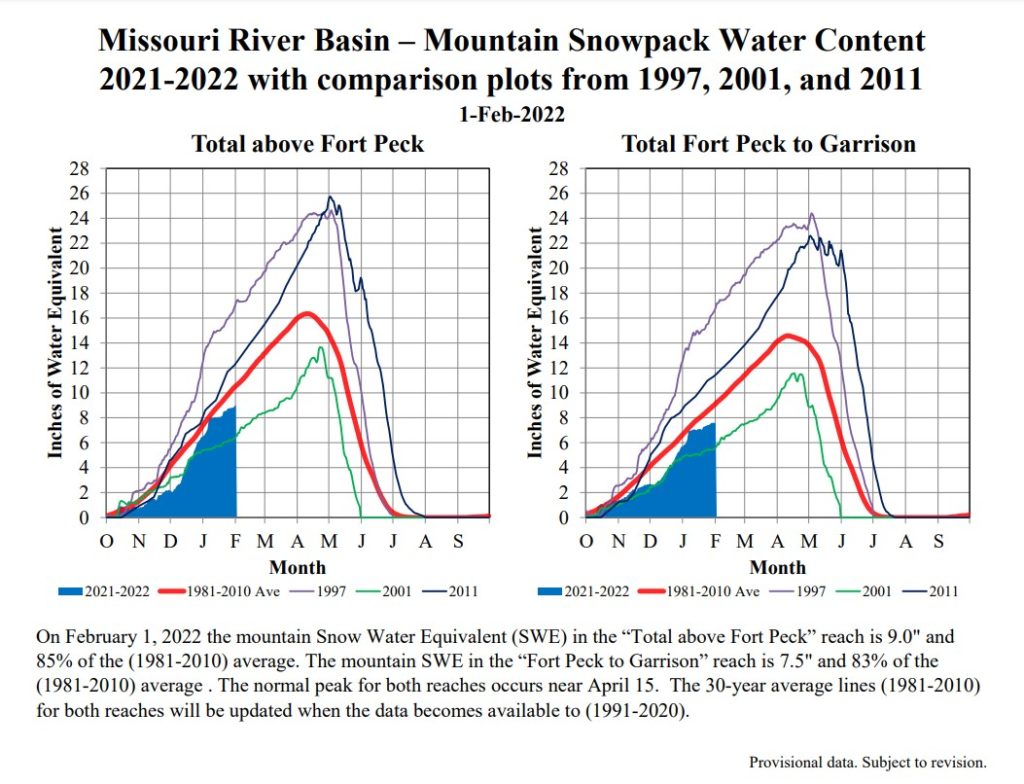

OMAHA, NEB. — Don’t look for more than a slight rise for Lake Sakakawea this summer. That’s the latest analysis from the U.S. Army Corps of Engineers.
However, with more than two months remaining in what is considered the snowfall season over the Missouri and Yellowstone River drainages, expectations can change. Mountain snowpack, or rather the moisture contained in it, is the major contributor to water that finds its way to the two major rivers feeding Lake Sakakawea.
The Missouri River flows into Fort Peck Reservoir in Montana. From there water is released through control structures back into the Missouri where it eventually reaches Lake Sakakawea. The Yellowstone River bypasses Fort Peck, flowing freely to its junction with the Missouri below Fort Peck and above Lake Sakakawea.
Last year saw declining water levels on Lake Sakakawea due to a historically low runoff of 15.0 million acre-feet of water, less than 60% of the long-term average of 25.7 maf. February 1 projections provided by the Corps call for 21.7 maf of runoff into the Missouri River basin in 2022. If realized, that amount of water would produce a rise of perhaps only five feet over the current level of Lake Sakakawea.
Lake Sakakawea, North Dakota’s largest reservoir, stood at just under 1,827 feet Thursday, a level that has not been seen since the summer of 2008 and early 2009. Great fluctuations in water levels are not uncommon for Lake Sakakawea. In 2011 the reservoir reached its overflow mark of 1,854 feet. Sakakawea’s all-time low was 1,807.1 feet in Feb. of 2007.
According to the Feb. projections by the Corps, Lake Sakakawea will peak this summer at just over 1,833 feet at the end of July. Furthermore, the reservoir is not projected to rise above the 1,830 foot level until sometime in June, meaning the first months of recreational activity this year will be on water levels much lower than usual.
While some boat ramps will not be useable due to low water, most will be, especially for boats that draft very little water. Also, work was being done to remove silt and other obstructions from several boat ramps on the reservoir last fall with the intention of having them useable at ice out this spring.
Additionally, should Sakakawea fall further, many boat ramps that were installed during low water years from 2004-2008 should be available for service if necessary.